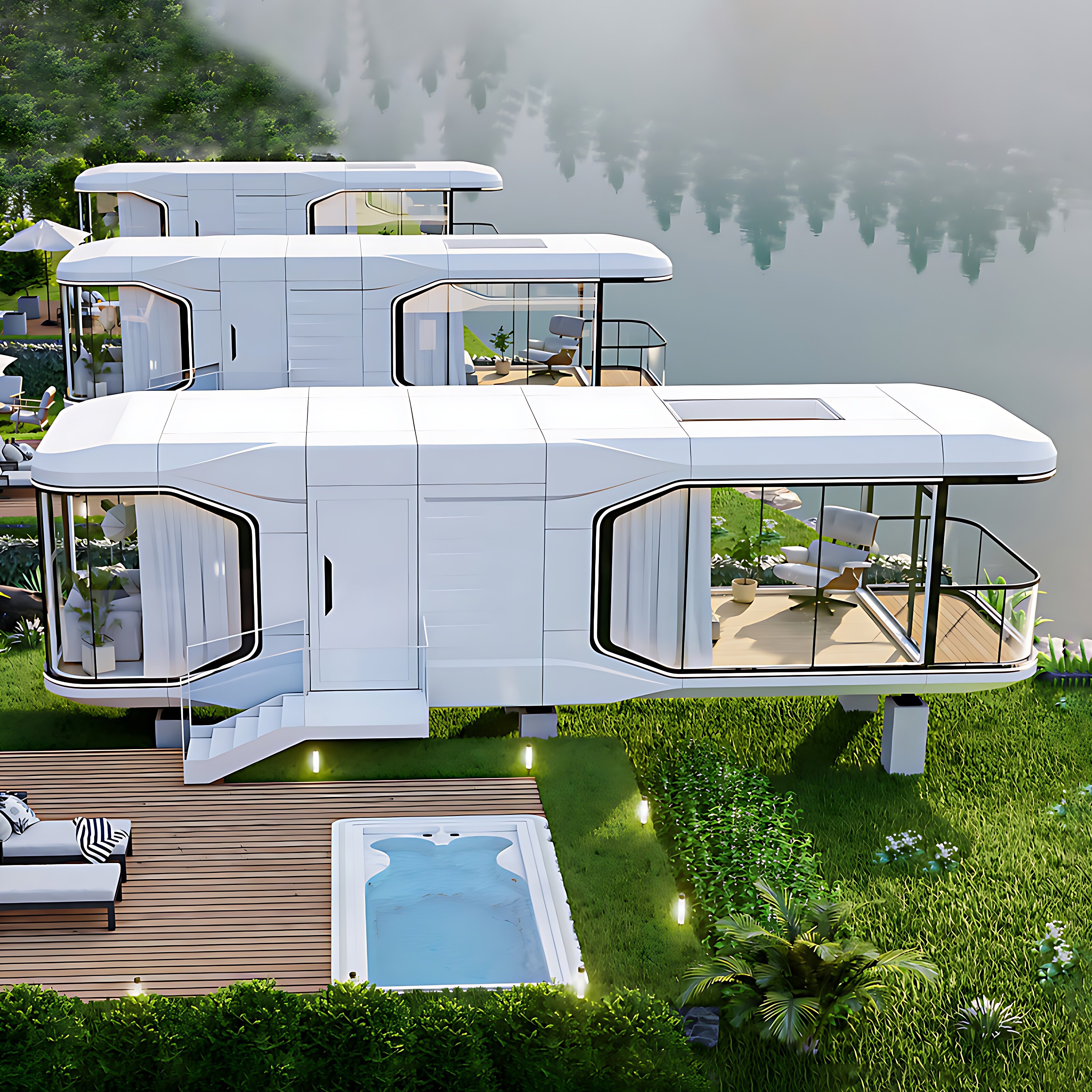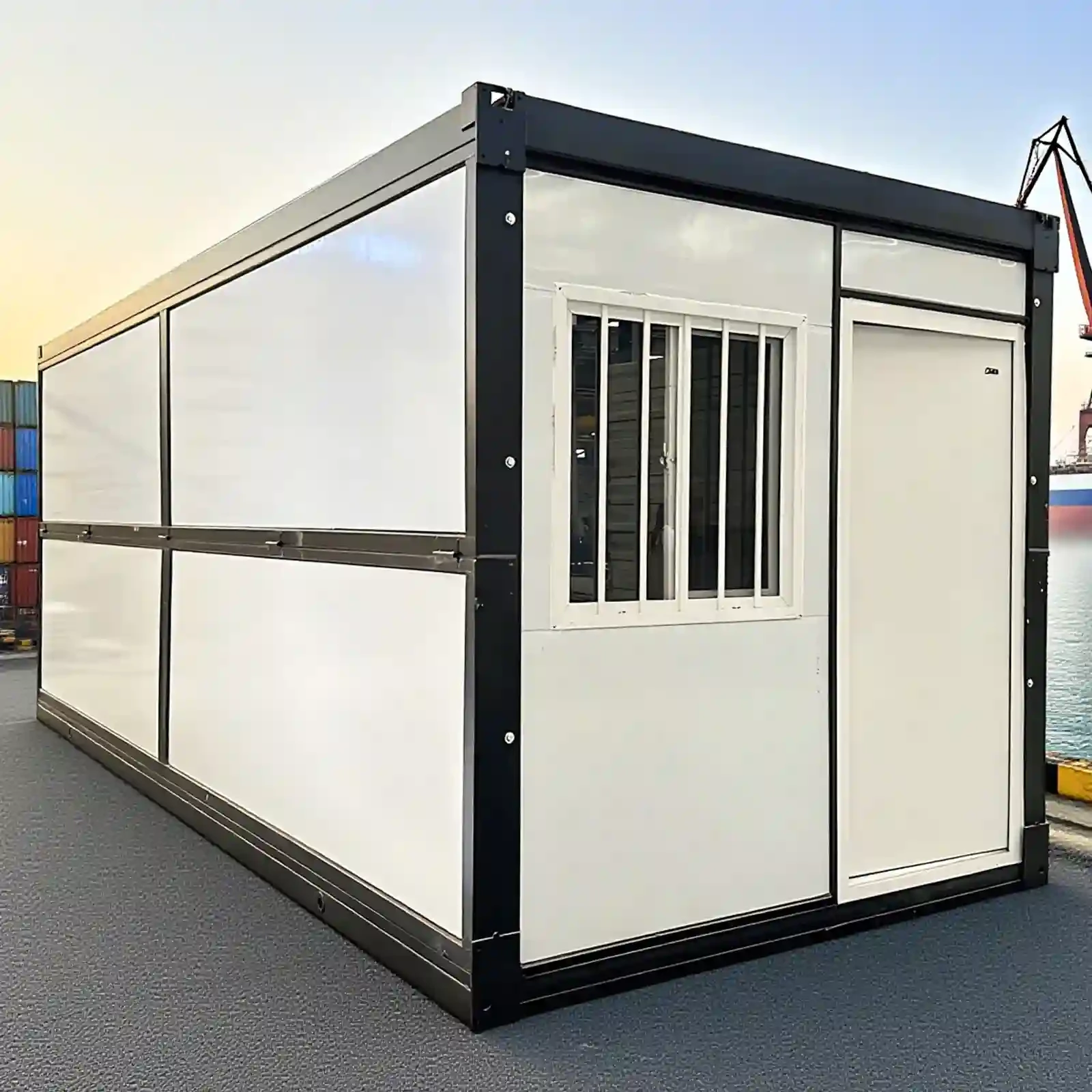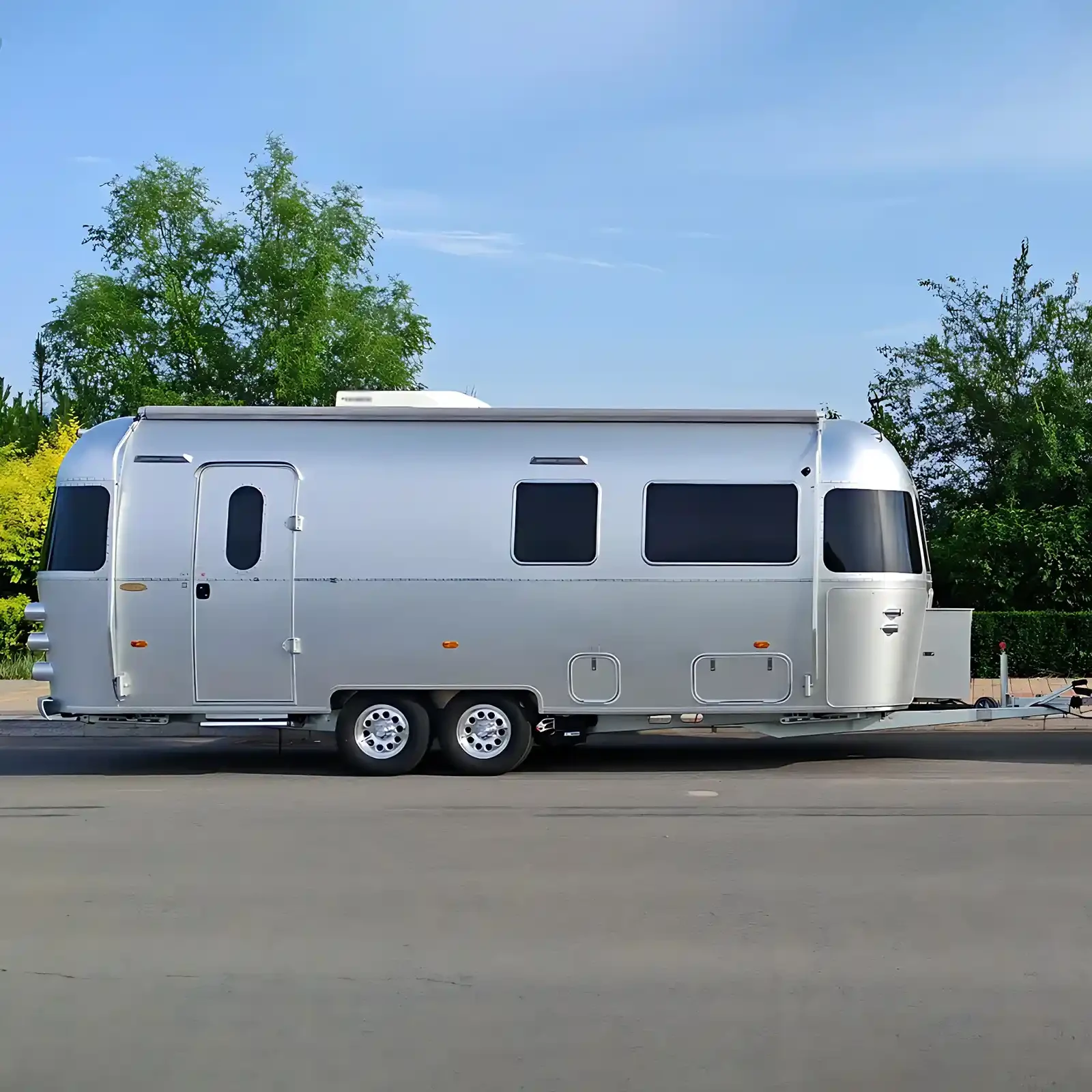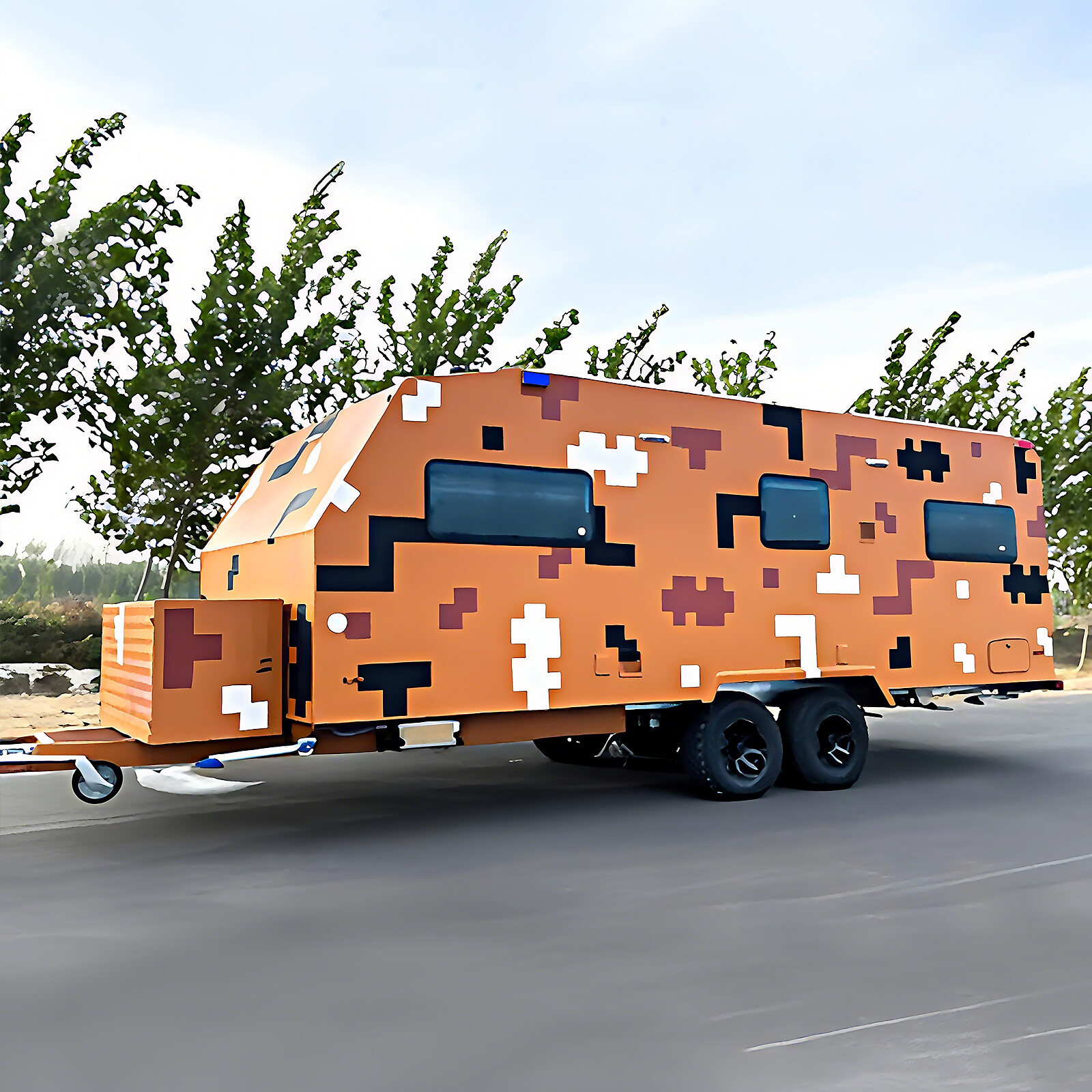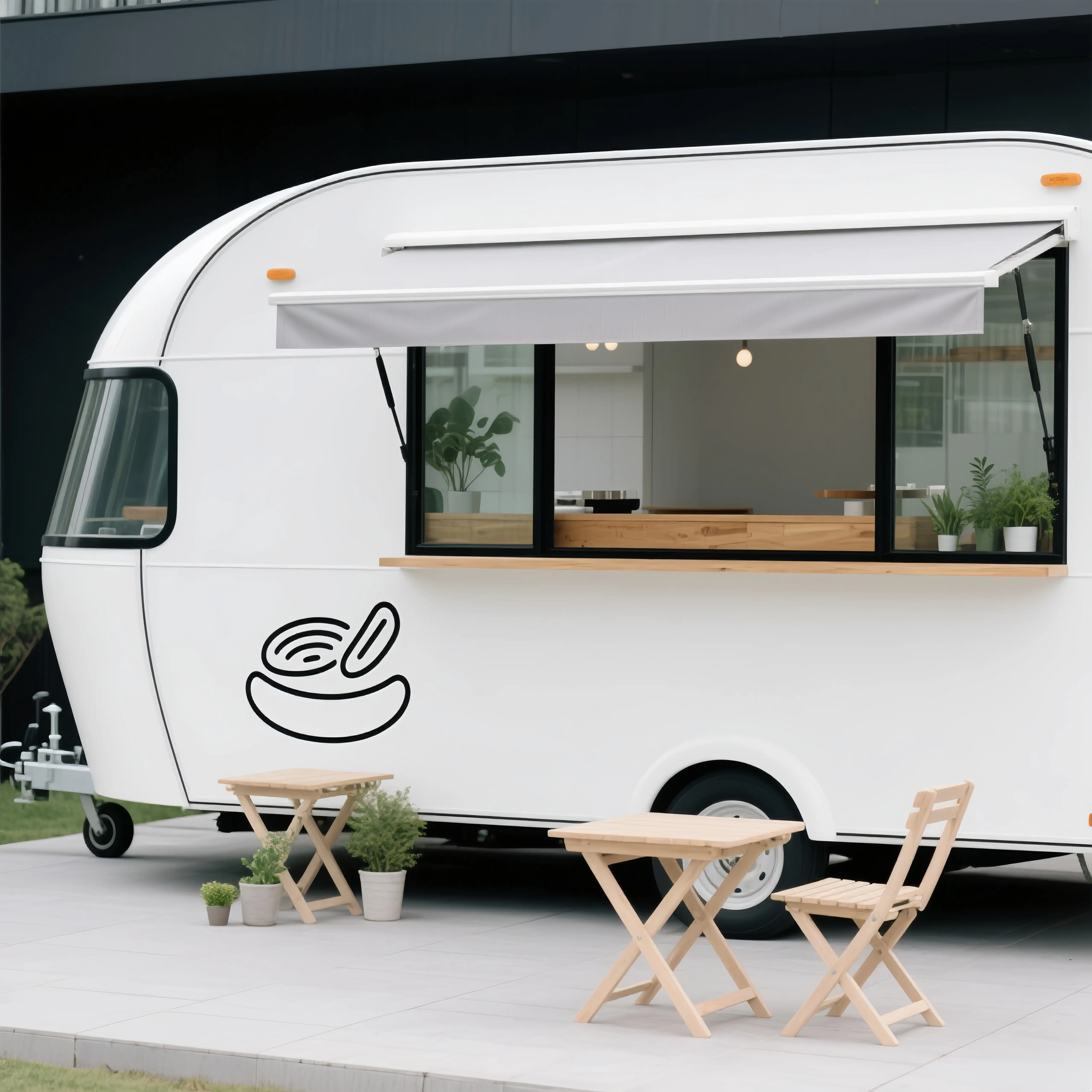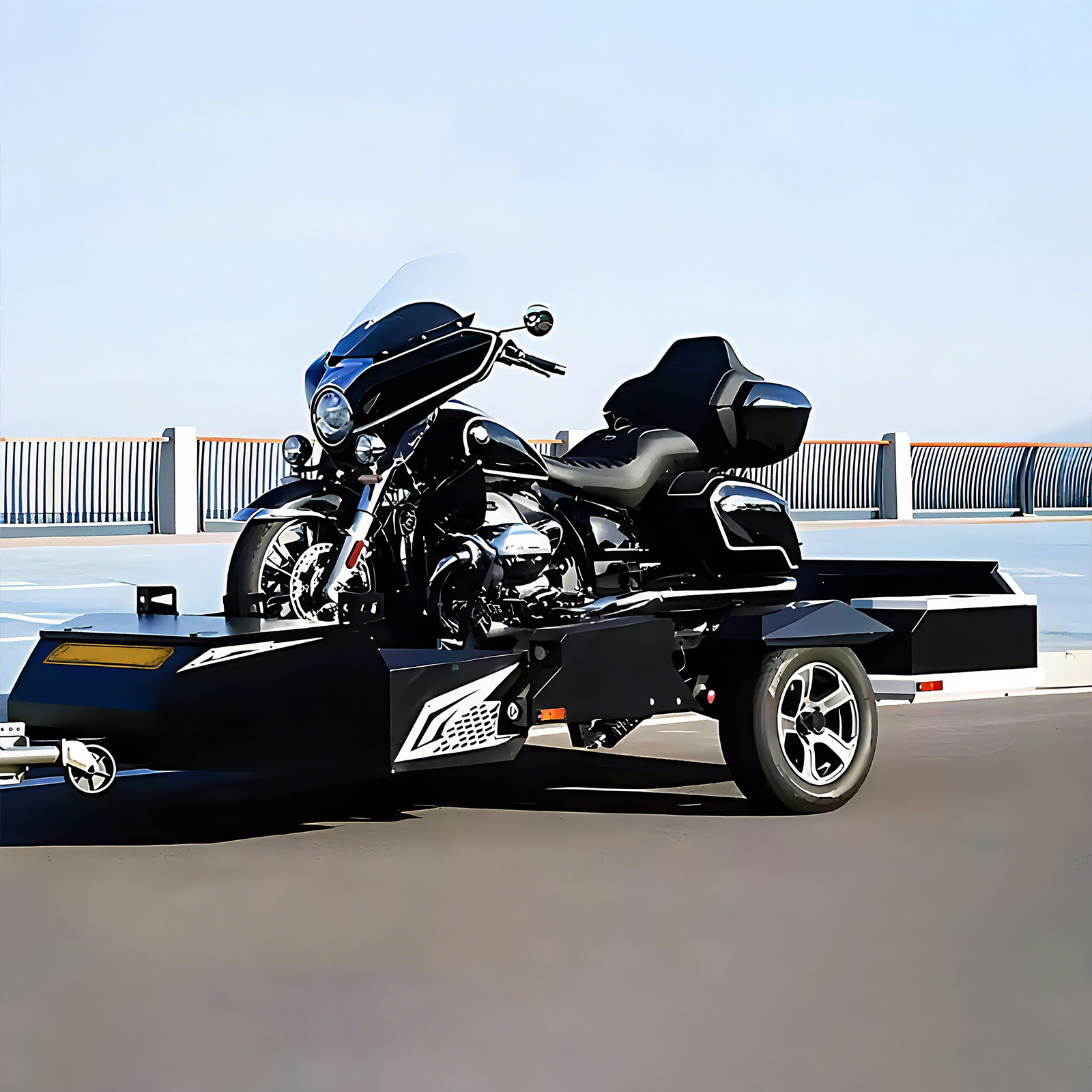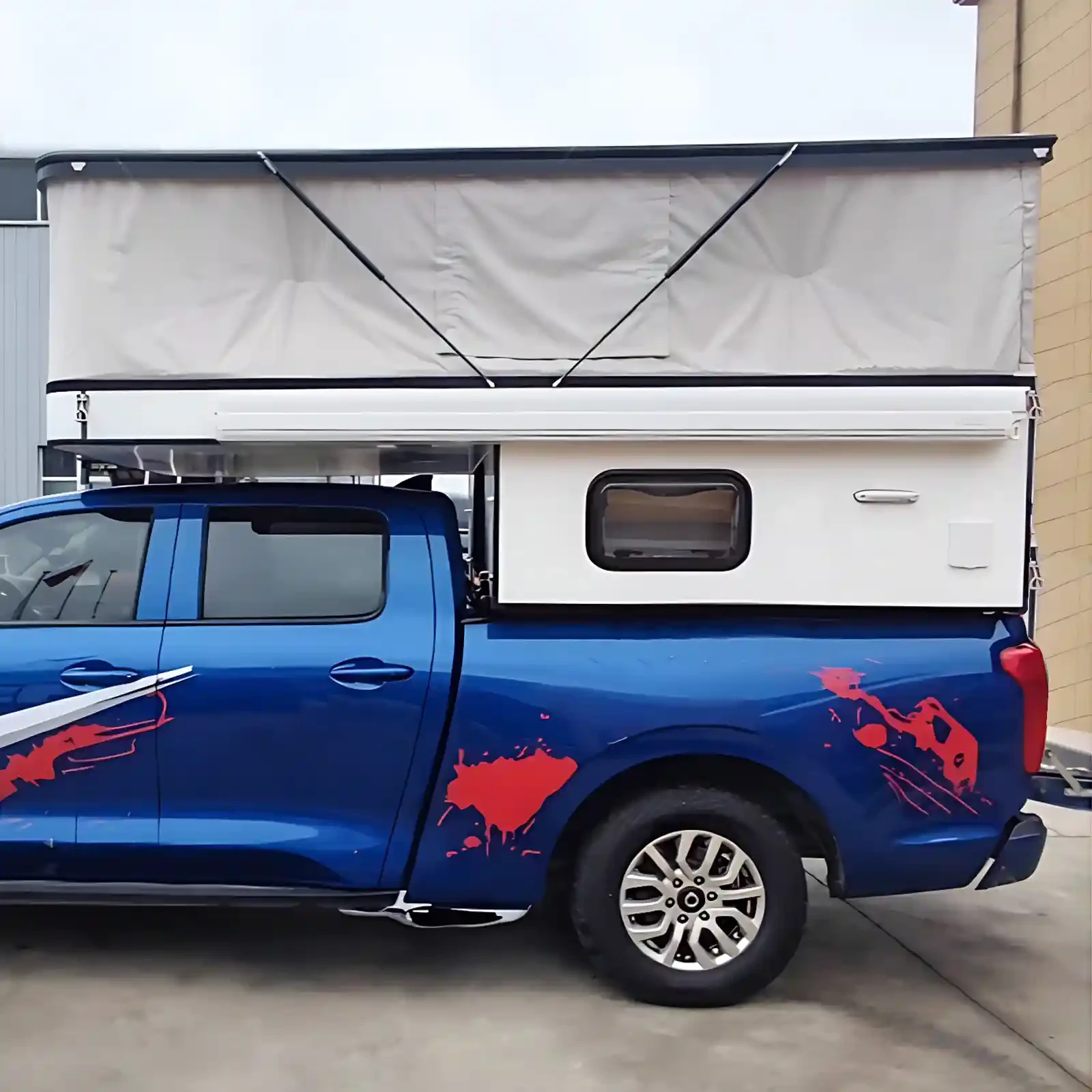As a unique living or working space in an outdoor environment, energy supply and energy conservation are crucial. Efficient energy supply ensures the normal operation of various equipment within the capsule and provides a comfortable environment for users, while energy-saving measures help reduce operating costs, improve resource utilization efficiency, and minimize environmental impact.
Full utilization of renewable energy
Widespread application of solar energy
Installation and Configuration of Solar Photovoltaic Panels: Solar energy is one of the most promising renewable energy sources for outdoor space capsules. To achieve efficient solar energy collection, space capsules typically install large-scale solar photovoltaic panels on their roofs or sun-facing surfaces. The selection of these panels is crucial. Currently, monocrystalline and polycrystalline silicon photovoltaic panels on the market offer high photoelectric conversion efficiencies, reaching 15%-25%. The number and power of photovoltaic panels should be appropriately configured based on the capsule's energy needs and installation space. For example, for a small 30-square-meter space capsule equipped with basic living facilities, with an average daily energy consumption of 10-15 kWh, calculations and actual testing indicate that photovoltaic panels with a total power of 3-5 kilowatts are appropriate. During installation, ensure that the orientation and tilt of the photovoltaic panels maximize sunlight reception. Generally, in the Northern Hemisphere, photovoltaic panels face due south, with the tilt adjusted according to the local latitude to ensure adequate sunlight in all seasons.
Integration of a solar energy storage system: Due to the intermittent nature of solar energy, an energy storage system is required to store excess power for use at night or on cloudy days. Lithium batteries are a common energy storage device, offering advantages such as high energy density, efficient charging and discharging, and a long lifespan. Solar photovoltaic panels are rationally integrated with a lithium battery energy storage system, and an intelligent controller manages the charging and discharging of power. When the power generated by the photovoltaic panels exceeds the space capsule's immediate consumption, the controller stores the excess power in the lithium batteries. When solar power is insufficient or the space capsule's power demand is high, the lithium batteries supply power to the loads. This integration not only improves solar energy utilization efficiency but also ensures a stable energy supply for the space capsule. For example, a lithium battery energy storage system with a capacity of 10-15 kWh can meet the basic power needs of a small space capsule for two to three consecutive cloudy days.
Effective use of wind energy (applicable to areas with abundant wind resources)
Selection and Installation of Small Wind Turbines: In outdoor areas with abundant wind resources, such as seaside areas and grasslands, the capsule can be equipped with a small wind turbine as an auxiliary energy supply. Small wind turbines typically range from 1 to 10 kilowatts. The appropriate power should be selected based on the local average wind speed and the capsule's energy needs. During installation, the height and location of the wind turbine should be considered to optimize wind energy resources. Typically, the wind turbine should be installed 3 to 5 meters above the capsule roof, free of obstructions, to ensure adequate wind energy capture. Furthermore, the design and material of the wind turbine blades also affect power generation efficiency. Using lightweight, high-strength composite blades and optimizing the blade shape and angle can improve wind energy capture and conversion efficiency.
Synergistic operation of a wind-solar hybrid system: To further improve the stability and reliability of energy supply, a wind-solar hybrid system can be formed by combining solar photovoltaic panels with small wind turbines. An intelligent control system automatically adjusts the operating status of the photovoltaic panels and wind turbines based on changes in solar radiation intensity and wind speed, achieving coordinated power generation. When there is ample sunlight and low wind speed, the solar photovoltaic panels primarily provide power. When the wind is strong but the sun is insufficient, the wind turbines play a primary role. When both sunlight and wind are sufficient, both generate power, with excess energy stored in the energy storage system. This wind-solar hybrid system fully utilizes local natural energy resources, reduces reliance on a single energy source, and improves the stability and efficiency of energy supply.
Energy-saving optimization of cabin equipment
Adoption of efficient lighting systems
The popularity and advantages of LED lighting: Lighting is one of the most basic electrical needs within a space capsule, and the use of efficient lighting systems can effectively reduce energy consumption. LED lighting, with its high luminous efficiency, long lifespan, and low energy consumption, has become the preferred choice for space capsule lighting. Compared to traditional incandescent and fluorescent lamps, LEDs can increase luminous efficiency by 3-5 times and reduce energy consumption by 70-80%. Within the capsule, the number and brightness of LED lamps are optimally arranged according to the functions and lighting requirements of different areas. For example, soft, warm-toned LED lighting is used in living areas to create a comfortable living atmosphere, while brighter, cool-toned LED lighting is used in work areas to meet task lighting needs. Furthermore, an intelligent dimming system automatically adjusts light intensity based on ambient light and user needs, further reducing energy consumption.
Maximizing natural light: In addition to artificial lighting, fully utilizing natural light is also a key energy-saving measure. In the capsule design, the area and number of windows are increased, and their placement and orientation are rationally planned to allow more natural light to enter the cabin. The use of highly translucent glass materials, such as low-emissivity (Low-E) glass, not only improves daylighting but also reduces heat transfer, lowering the load on the air conditioning system. During the day, when natural light is abundant, an intelligent lighting control system automatically turns off or dims artificial lighting fixtures, achieving a seamless transition between natural and artificial lighting and minimizing energy consumption.
Selection of energy-saving electrical equipment
High-efficiency air conditioning systems: The air conditioning system is one of the largest energy consumers in a space capsule, making the selection of energy-efficient systems crucial for reducing energy consumption. Currently, inverter air conditioners and ground-source heat pump air conditioners offer high energy efficiency ratios. Inverter air conditioners intelligently adjust compressor speed, automatically adjusting cooling or heating power based on indoor temperature fluctuations, saving 30%-40% compared to fixed-speed air conditioners. Ground-source heat pump air conditioners utilize shallow geothermal resources for heating and cooling, achieving energy efficiency ratios exceeding 4-5, resulting in significant energy savings. When installing an air conditioning system in a space capsule, the power and type of air conditioner should be appropriately selected based on the capsule's area, insulation performance, and local climatic conditions. Furthermore, strengthening the capsule's thermal insulation, such as using high-insulating wall materials and door and window sealing materials, can reduce heat transfer between indoor and outdoor spaces, lowering the operating load of the air conditioning system and further improving energy efficiency.
Selection and Use of Energy-Efficient Home Appliances: Energy-efficient products should also be prioritized for other home appliances installed in the space capsule, such as refrigerators, televisions, and washing machines. These appliances utilize advanced energy-saving technologies, such as high-efficiency compressors and intelligent control systems, during their design and manufacturing process, to reduce energy consumption. For example, energy-efficient refrigerators utilize high-efficiency insulation materials and optimized refrigeration systems, resulting in energy consumption that is 20%-30% lower than conventional refrigerators. When using home appliances, intelligent control systems should be used to rationally manage their operating time and power to avoid unnecessary energy waste. For example, refrigerators should be set to an appropriate temperature and the door should be opened and closed frequently. When not in use, devices such as televisions and computers should be turned off promptly to reduce standby power consumption.
Application of energy management and monitoring systems
Functions and Roles of the Intelligent Energy Management System: To achieve efficient energy supply and energy conservation within the space capsule, the installation of an intelligent energy management system is essential. This system monitors the operating status and energy consumption of various energy devices within the space capsule in real time, including the power generated by solar photovoltaic panels, wind turbines, the energy storage system, and the energy consumption of various electrical devices. Through data analysis and intelligent algorithms, the system automatically optimizes energy distribution and equipment operation strategies based on energy demand and supply. For example, when solar power is sufficient, solar energy is prioritized for powering the space capsule, with excess energy stored in the energy storage system. When the energy storage system is low and solar power is insufficient, the system automatically activates a backup power source or adjusts the operating power of electrical devices to ensure a stable and reliable energy supply. The intelligent energy management system also collects statistics and analyzes energy usage, providing users with energy consumption reports and energy-saving recommendations to help them better understand and manage their energy use.
Establishing an energy monitoring and feedback mechanism: In addition to intelligent energy management systems, establishing an energy monitoring and feedback mechanism can also effectively promote energy conservation. Energy monitoring devices, such as electricity, water, and gas meters, are installed in the space capsule to monitor energy consumption in real time and provide feedback to users. Through mobile apps or indoor display screens, users can view energy consumption data at any time and understand energy usage trends. When abnormal energy consumption is detected, users can promptly identify the cause and take appropriate energy-saving measures. For example, if air conditioning energy consumption is excessively high, the user can check the air conditioner's settings and operating status to see if there are any problems such as doors and windows not closed or reduced insulation performance, and make timely adjustments and repairs. This energy monitoring and feedback mechanism can enhance users' energy-saving awareness, encourage them to take proactive energy-saving actions, and further reduce energy consumption.
Achieving efficient energy supply and energy conservation in space capsules outdoors requires the integrated application of multiple technologies and measures. By fully utilizing renewable energy sources like solar and wind power, optimizing the energy-saving performance of in-cabin equipment, and implementing intelligent energy management and monitoring systems, energy efficiency can be effectively improved, energy consumption can be reduced, and sustainable development can be achieved. With the continuous advancement of technology, more advanced energy technologies and energy-saving measures will be applied to space capsules in the future, bringing a more convenient, comfortable, and environmentally friendly experience to outdoor living and working.

 USD
USD
 GBP
GBP
 EUR
EUR
